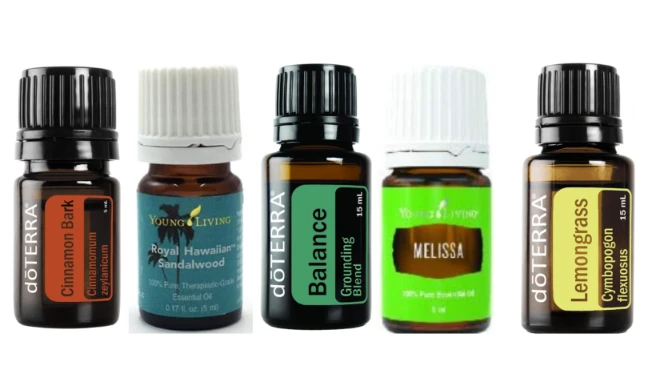Young Living vs. doTERRA: The More Trustworthy Essential Oil Brand?
With essential oils booming in popularity, you’ve probably heard of the two big brands – Young Living and doTERRA.
As an aromatherapy enthusiast, I’ve done deep dives into these leading oil companies. I want to cut through the hype and get the plain facts.
Which of these essential oil giants is more trustworthy when it comes to sourcing, testing, and production?
My goal is to scrutinize and compare key aspects of Young Living and doTERRA. This will help us decide which company seems to take transparency more seriously.
Get ready for an in-depth exploration of these two essential oil juggernauts. Let’s separate marketing claims from legit business practices.
Together, we’ll determine which oil company is walking their talk when it comes to integrity, quality standards, and honest communication with customers.
Company History and Reputation
Young Living was founded in 1993 by Gary Young and was the first company to make essential oils a mainstream wellness product. However, some controversy exists around the founder Gary Young regarding his credentials and past business ventures. There were also OSHA violations found at Young Living facilities.
doTERRA emerged later in 2008 and was founded by former Young Living executives. doTERRA has a cleaner public reputation with no major controversies or issues thus far.
Quality and Purity Claims
Young Living touts their rigorous “Seed to Seal” process to ensure oil purity and quality. However, there have been some questions raised around their health benefit claims not matching up with research studies.
doTERRA coins their own purity term “CPTG” which stands for Certified Pure Therapeutic Grade. However, this is not an official certification in the industry. The term implies purity standards, but is ultimately a marketing term.
Independent testing has also revealed chemical undertones in some Young Living oils, indicating potential additives or impurities.

Sourcing and Production
Young Living operates some of their own farms in the United States. However, not all plants are sourced from their indigenous origins, which can impact oil quality.
doTERRA emphasizes sourcing each oil from where the plants thrive natively for optimal quality. However, both companies buy from the same third-party suppliers, indicating potential similarity in quality.
Company Conduct and Transparency
Criticism has emerged around some of Young Living’s health claims not matching up with the research studies cited. This raises concerns over transparency.
doTERRA has also not revealed all components in their blends and has made unsupported health claims about their oils. Their communication regarding their high-quality peppermint oil has been vague as well.
Further, doTERRA has no certified organic oils despite claiming difficulty sourcing organic materials from certain countries. This casts doubt on their reasoning and commitment to organic production.
Pricing and Value
Both Young Living and doTERRA oils come at a high price point. However, doTERRA’s frankincense is cheaper because it is a blend of frankincense varieties rather than a single source.
The high prices charged raise questions around whether lower quality ingredients are used in the oils than the companies claim, as the pricing is not on par with that of verified high-quality, therapeutic grade oils.
Most Noteworthy Products
Sacred Frankincense Oil – This is one of Young Living’s most expensive and premium oils, steam distilled from Boswellia sacra trees. It has an earthy, woodsy aroma and is great for skin care or meditation.
Lavender Essential Oil – Both Young Living and doTERRA offer high quality lavender oils which are very versatile. Lavender is perfect for relaxation, skin care, headaches, sleep and more.
Essential Oil Starter Kits – Both companies offer starter kits with a selection of their most popular oils. This allows you to try a variety of singles oils and blends.
Pros of Young Living and doTERRA
- Large range of single oils and blends
- Offer oil infused personal care products
- Educational resources on using oils
- Network of passionate oil users
Cons of Young Living and doTERRA
- Premium pricing may not match actual oil quality
- Lack of transparency for some sourcing and purity details
- Some unsupported health claims made in marketing
Summary Tables
| Young Living | doTERRA |
|---|---|
| First major essential oil MLM company | Founded later by former Young Living executives |
| Questions around founder Gary Young | No major public controversies |
| Self-owned farms not always in plant’s indigenous region | Emphasizes sourcing oils where plants originate |
| OSHA violations found at facilities | No known regulatory issues |
| Undertones noticed in some oil testing | Unclear messaging around purity of oils like peppermint |
| Controversy around health claims not matching research | Non-disclosure of some oil components and possible unsupported health claims |
| Expensive oils may not align with therapeutic value | No organic certification, though states difficulty sourcing organic oils from certain countries |
Conclusion
In summary, while Young Living and doTERRA both make impressive claims about their rigorously tested, pure essential oils, the full transparency is lacking from both companies to back up these claims.
Consumers should thoroughly research any essential oil company they plan to buy from and look for verified purity certificates and detailed information on sourcing and production methods before making a purchase decision. When it comes to Young Living vs doTERRA, the more trustworthy brand has yet to emerge.
